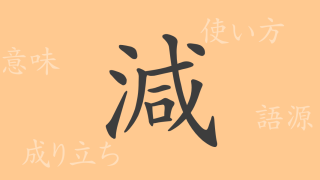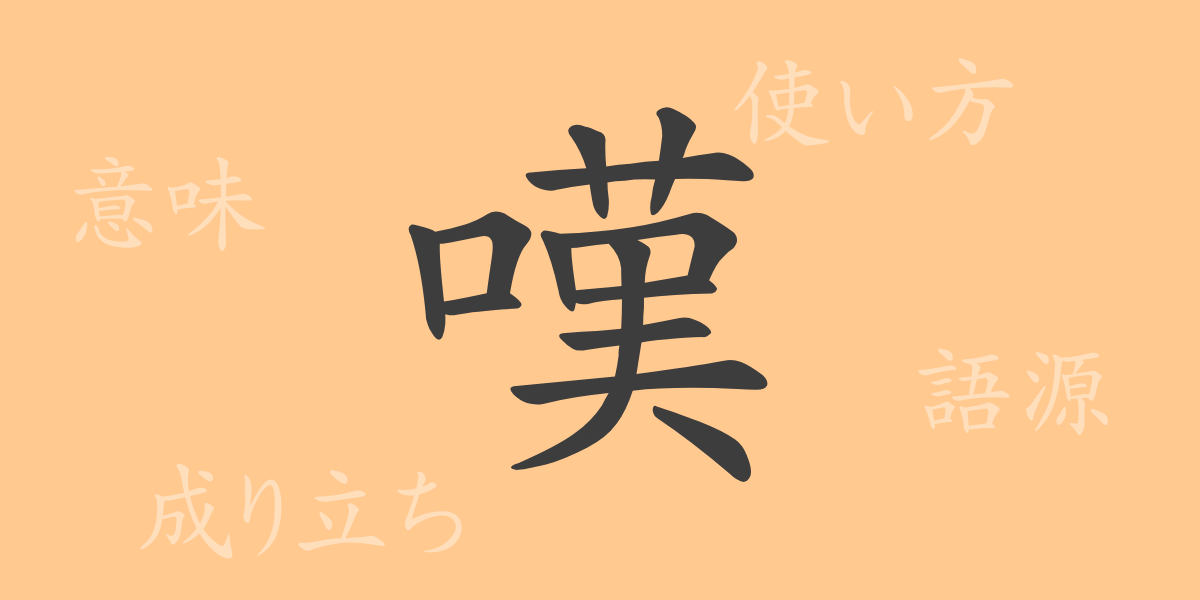The Japanese kanji ‘嘆’ (タン) (tan), symbolizes the beauty of the Japanese language. This character, frequently encountered in daily life, encapsulates profound meanings and plays an essential role in expressing the nuances of emotions. This article explores the world of ‘嘆’, delving into its rich history, meanings, usages, and the expressions it features.
Origins of ‘嘆’ (タン) (tan)
The kanji ‘嘆’ originated in ancient China, depicting the act of exhaling breath directly from the mouth. This image evolved to represent the deep sighs and lamentations that words could not fully express, serving as a medium for unspoken emotions. Over time, ‘嘆’ became associated with expressing deep emotional states, such as grief and admiration, not adequately conveyed by words alone.
Meaning and Usage of ‘嘆’ (タン) (tan)
‘嘆’ is used to express strong emotions such as sadness, disappointment, and pity. Depending on the context, it can also indicate admiration. For instance, ‘嘆く’ (なげく) (nageku) is a verb that expresses intense feelings of sorrow or regret, while ‘嘆賞’ (たんしょう) (tanshou) is a noun used to express admiration for something beautiful or an impressive skill.
Readings, Stroke Count, and Radical of ‘嘆’ (タン) (tan)
The kanji ‘嘆’ has several readings and is structurally complex, reflecting its broad semantic range:
- Readings: On’yomi ‘タン’ (Tan), Kun’yomi ‘なげ.く’ (‘nageku’), ‘なげ.かわしい’ (‘nagekawashii’)
- Stroke Count: 13 strokes
- Radical: 口 (くちへん) (kuchihen) – the radical for ‘mouth’
Phrases, Proverbs, and Idioms Using ‘嘆’ (タン) (tan) and Their Meanings
The character ‘嘆’ appears in various idioms and proverbs, each reflecting aspects of Japanese culture and values:
- 嘆息 (たんそく) (tansoku) – To sigh deeply, expressing heartfelt sorrow or suffering.
- 感嘆 (かんたん) (kantan) – To be deeply moved by someone’s actions or by certain events, expressing admiration.
- 嘆願 (たんがん) (tangan) – A strong appeal or request, particularly used when petitioning someone in a higher position or an official body.
- ‘嘆きの壁’ (‘nageki no kabe’) – A phrase describing situations of great difficulty, symbolically referring to lamenting in the face of challenges.
Summary on ‘嘆’ (タン) (tan)
The kanji ‘嘆’ adeptly captures the depth and complexity of human emotions. It is utilized across various expressions to depict the emotions experienced in everyday life. By understanding the meanings embedded in ‘嘆’, we can more profoundly appreciate the richness of emotions behind the words we use. Let this exploration of ‘嘆’ deepen your appreciation of the Japanese language’s subtleties and expressive power.

























